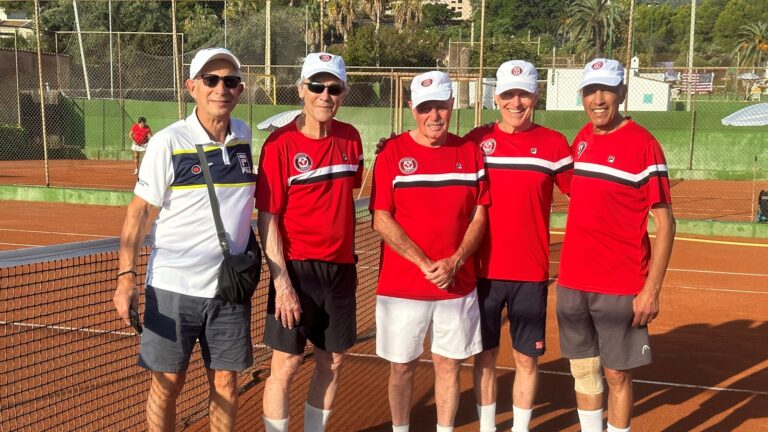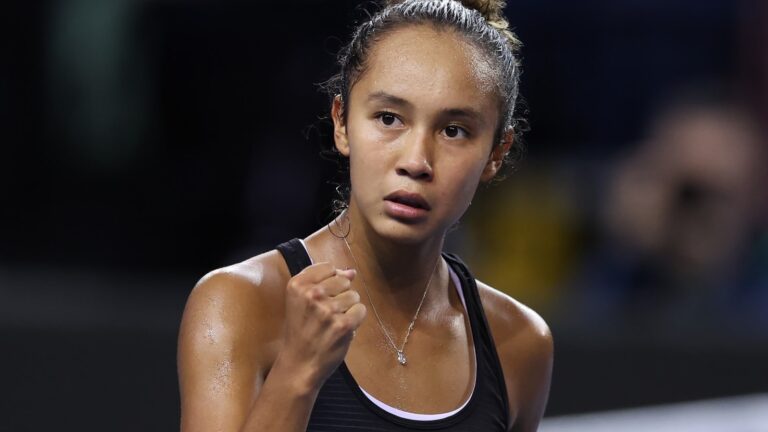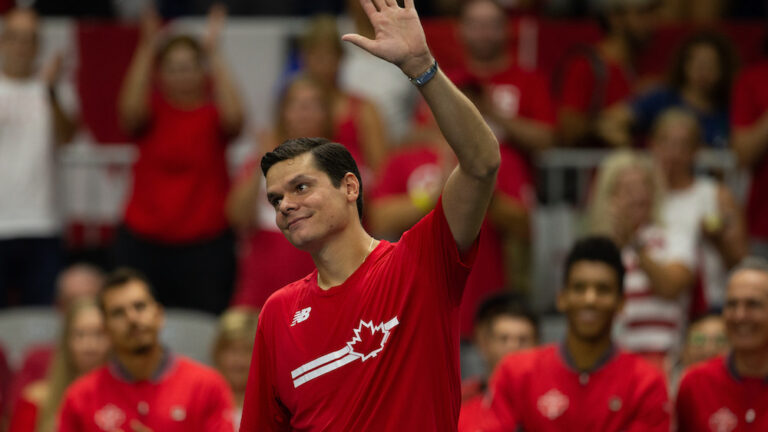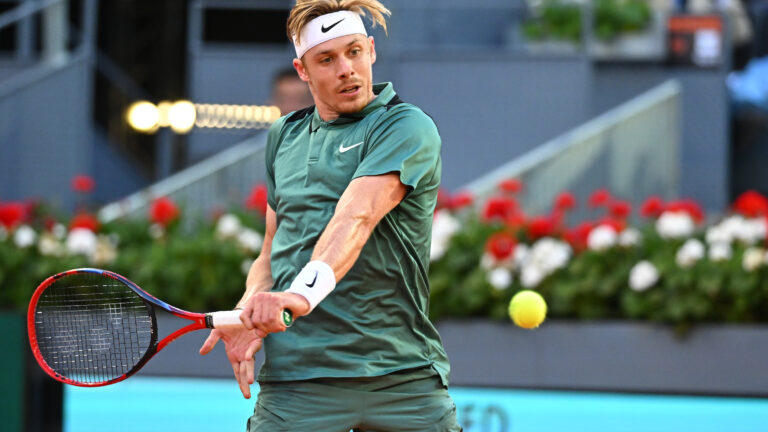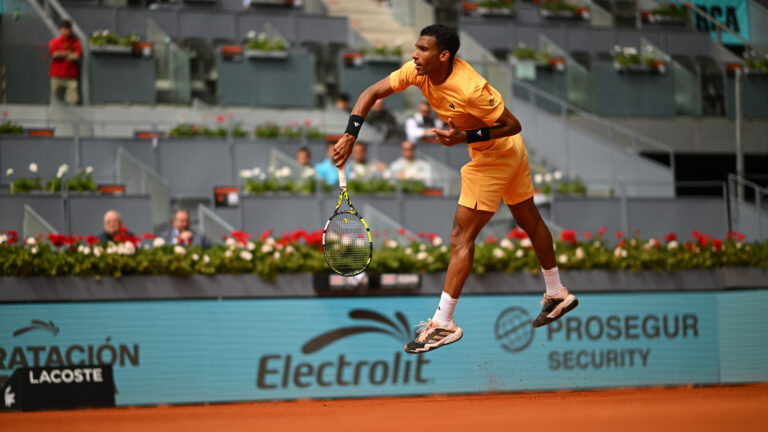
Photo : WTA
Among the many headliners in the mix at the first of the two spring events on US soil was Emma Raducanu.
Not for long, but still.
Is she worth a billion dollars like former Romanian pro and businessman Ion Tiriac said, piggybacking on a tweet by British PR guru Mark Borkowski claiming she was the billion-dollar girl after her big win in NYC, or just a one-hit wonder?Or does her path lie somewhere in between?
Considering current circumstances and her undeniable talent, let’s say she’s in between. A gifted athlete who perhaps experienced too much, too fast.
She’s not alone. There are countless young athletes just like her who were prematurely labelled as the next big thing.
In California, Emma battled through her first clash and then lost in the next round to Petra Martic of Croatia. Serving for the match at 5-4, Raducanu lost the next three games and the set and was promptly sent packing.

There haven’t been any other miracles since her unexpected US Open triumph. Her questionable decision to split from her coach, a bout of COVID-19 and an injury definitely slowed the momentum, and those things are all part of the equation.
There’s also the reality that awaits any prodigy who suddenly emerges.
After winning 10 straight matches without dropping a single set at her very first Slam, things suddenly got real. The result? A 4–7 record.
Of the seven losses, only one was against a high-ranking player: No.13 Elena Rybakina. The average ranking of Raducanu’s other opponents was no.87. Her four wins were over players around no.90.
Nothing to write home about, as the saying goes.
The euphoria is gone but the money that rained down from a myriad of sponsors charmed by her athletic and advertising potential has not.

“Still trying to figure everything out, and everything is still very new and it’s going to take a while to really settle into it,” Emma recently said.
That reminds me of something the Québec government repeated at the start of the pandemic about building the airplane while flying the first wave.
In Romanian newspaper Pro Sport, Ion Tiriac openly criticized Raducanu for firing coach Andrew Richardson, who helped her find her way to her first major: “Why did she get rid of the coach who took her there?!”
Tiriac is a loudmouth. He also knows tennis and money.

Nicknamed Count Dracula and the Brazov Bulldozer in business, the Transylvanian holds 27 doubles titles, including Roland-Garros with his countryman Ilie Nastase, whom he later coached. Tiriac also worked as a coach, agent and advisor to the likes of Guillermo Vilas, Boris Becker, Goran Ivanisevic, Mary Joe Fernandez, Marat Safin and Simona Halep.

But, like anyone who senses the sports and financial potential of a young tennis talent, Tiriac takes a shortcut when he puts so much emphasis on the word billion and, by the same token, Raducanu’s hypothetical future.
Because nothing is more fragile than a career in sports.
In the past 20 years, the monetary possibilities and hype surrounding sports have exploded. Still, among the sports icons in the billionaires’ club, there are no tennis players.
The richest is Roger Federer: $450 million.
Ironically, among former tennis players, the only billionaire is Ion Tiriac ($1.2 billion).
As far as pegging 19-year-old Emma Raducanu as the next billion-dollar tennis star, the jury is still out.
Keeping your head in the game

March 12th was a tennis Saturday like any other at the BNP Paribas Open in Indian Wells. I watched my favourites Fernandez and Shapovalov and caught a few other matches here and there.
There were some easy contests and some tough ones, brilliant shots and blunders. There were seeds ousted by lower ranked opponents and leads that slipped through players’ fingers.
Take the promising Sebastian Korda, for example, who was up 5-2, 30-30 in the third against the impressive Rafael Nadal on the cusp of his first loss after 16 straight wins this season.
You already know how things panned out. The King of Clay clawed his way back.
Mental strength is what creates the greatest comebacks and most surprising tumbles.
In recent years, the term mental has also become associated with health, as more and more athletes in all sports share their personal struggles.
And that’s when an ordinary tennis Saturday turns into something else entirely.
First, Naomi Osaka. We know her story, since so much has already been said and written about it. Currently ranked No.78, she was getting back on her feet when a cruel and unanticipated episode occurred.
Her second-round match against Veronika Kudermetova had just gotten started when Osaka was verbally harassed by a spectator in the third game. The insult triggered a wave of awful memories from the past year.

The chair umpire and tournament supervisor chose not to eject the spectator, and Osaka fell in two sets, 6-0, 6-4.
After the match, Naomi found the courage to ask for a microphone and speak to the crowd, drawing a parallel with the same mean-spirited treatment Venus and Serena Williams were subjected to in 2000, in the very same stadium.

An hour earlier, just a point away from victory, Amanda Anisimova was overcome by emotion in her match against Leylah Fernandez, from whom we shouldn’t take anything away.
Let’s go back two years to September 2019, when Amanda Anisimova unexpectedly lost her father and coach. She had just turned 18 and sat at No.23. She later fell to No.86 and worked her way back to go into Indian Wells at No.43.
In 2022, she was off to a good start. With Simona Halep’s former coach Darren Cahill (Anisimova defeated Halep in the quarters at Roland-Garros in 2019), she won a lead-in event ahead of the AO in January.
Last week, after their first practice in California, Cahill took everyone, including Amanda, by surprise when he ended their partnership. According to Ben Rothenberg, the coach was burnt out and hit a wall.
Not the best way to start a WTA 1000 tournament.
Still, after winning her opening round match, Anisimova was well on her way to overpowering Fernandez.
Until the end of the second set, she was playing great tennis. I’d even qualify the first set as a tennis clinic for Leylah, who was overwhelmed and unable to come up with any answers to the big shots and surgical precision displayed by Anisimova, who was playing like a woman in the Top 3.

Photo : Eurosport.com
When she dropped a match point at 5-3, her entire demeanor changed. The stress was written all over Anisimova’s face. When she let three more slip at 5-4, 40-0, she came undone, losing 0-7 in the tiebreaker.
After the set, she gathered her things and quickly left the court, despite the chair umpire Juan Zhang asking her to wait for the supervisor.
A WTA press release and tweet by Anisimova later cited illness as the reason for her exit.
Despite Amanda Anisimova’s tremendous talent, the past few years have been a rollercoaster. Riding out the storm, handling its impacts and continuing to win as if nothing happened isn’t easy.

The good news is that, in the past year, more and more athletes—women and men in every sport—are speaking out and taking a step back to do what’s best for them.
Let’s hope Naomi and Amanda are back on the courts very soon.
The Cressy Crescent
Virtually unknown just a year ago, Maxime Cressy quickly found his way onto the list of ATP ace leaders.
As far as aces on all surfaces this season, the 6’6” American currently ranks fourth behind Félix Auger-Aliassime, John Isner and Reilly Opelka.
When facing the World No.72, opponents are usually ready for his big shots and work hard to keep his first serves in play.
But on March 10, there was no way Christopher Eubanks could have prepared for the shot that’s become known as the Cressy Crescent. Read all about it, including reactions and Hawk-Eye’s take, right here.
Email: privard@tenniscanada.com
Twitter: @paul6rivard
Follow all our Canadians in action here.
